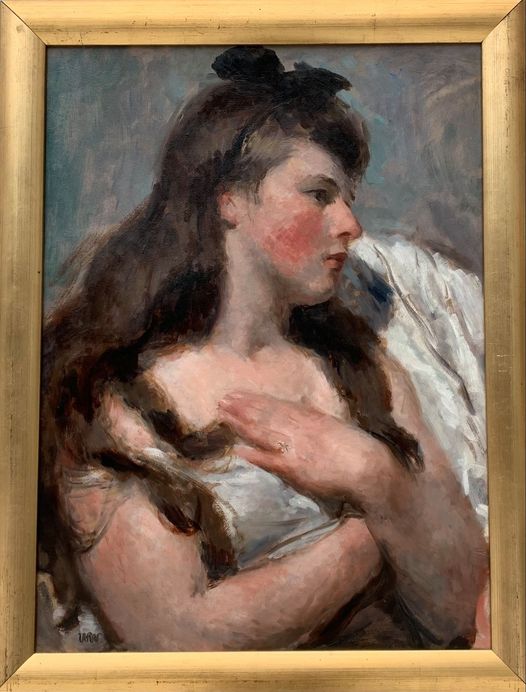Description:
Wojciech Weiss (1875-1950) was born in Romania, from where he moved to Poland in 1888 with his parents. After graduating from a Cracow gymnasium, he began his studies at the Academy of Fine Arts. Numerous European trips allowed the artist to become familiar with the contemporary artistic trends, the reception of which can be found in his work. At the age of only 23, he debuted at an exhibition at the Warsaw Society for the Encouragement of Fine Arts. Recognized as a promising talent, he was a member of the Polish Artists’ Society “Sztuka” the following year. For years he regularly exhibited his paintings, winning numerous awards. His work can be divided into different stylistic periods. The first, known as expressionism, permeated with symbolism, was characterized by works inspired by the work of Edward Munch. Paintings painted with a dark palette were full of uneasiness and pessimism. The next period, known as the white period, takes its name from the artist’s search for light. The works of this period, painted in a light palette, are full of life joy. Towards the end of his life, he focused on the socialist realism trend, adapting to the current realities.
Description of the painting:
On the canvas, the artist depicted the profile of a young girl. She is presented to the waist. The woman is scantily dressed, with a strap of a light, white blouse falling from her right shoulder. With her hands she covers her chest and naked neckline. The face is turned to the left. There are blushes on it, dark red lips and dark eyes are also strongly accentuated. The model has long, brown hair, which flows down her bare shoulders. Her head is decorated with a black bow. Behind the woman is a fragment of draped white fabric. The background is a gray, blurred spot.
The work is kept in almost an impressionist technique. It lacks a marked contour, the strokes give the impression of blurring the figure, which only becomes sharp after a slight distance. The palette used by the artist is subdued, based on cool colors. The figure occupies almost the entire pictorial field, but fragments of hair, the right elbow or the bow go beyond its frames. It seems as if the representation was a fragment of a larger work. The blushes and the way the hands are arranged make it seem as if the woman was embarrassed by the situation. The model resembles Maria Zylberberg, the younger sister of the artist’s wife, who was a frequent figure depicted in his paintings.


